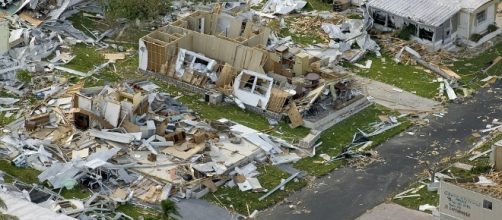Crucial supplies are expected to land Friday in ravaged Puerto Rico. On Wednesday 20 September, the island turned from a lush, historical tourist attraction, to a nearly unrecognizable wasteland. Raging mudslides covered several towns, while flooding has continued into Friday. Many areas are strewn with debris, tree branches, broken rooftops and dead animals. Having been closed as a precautionary measure, Aerostar Puerto Rico confirmed that the island's largest airport, the Luis Muñoz Marín International Airport, will open on Friday. However, the Caribbean nation's main ports in San Juan, Ponce, and Mayagüez, are yet to reopen for business.
Officials are hopeful that this is done soon because these routes are necessary for getting necessities to those most in need.
Where will the money come from?
Compounding its infrastructural problems, are its financial ones. For more than 10 years, Puerto Rico has been suffering from a recession and in desperation, declared bankruptcy in May 2017. It owes $74 billion in debt. Officials from the Federal Emergency Management Agency (FEMA) say at least 75 percent of the money needed to rebuild the island will come from FEMA since Puerto Rico is a US territory. Despite the aid, however, it is doubtful that amount will be enough, given the extent of the damage. Roads, bridges, homes, schools, and hospitals must be rebuilt, and the entire electrical grid needs to be restored.
Director of FEMA's Puerto Rico branch Alejandro de la Campa, expects both commercial and military planes to land on the island Friday with emergency supplies. These include cots, medical supplies, foodstuff, drinking water, batteries, and generators. Search and rescue teams will also try to find several people, including the elderly, who are still missing.
Guyana offers hope
It is still unclear how much rain Hurricane Maria actually dumped on Puerto Rico, as the only two Doppler radar stations there were knocked out by the storm. All electricity has been cut and it is expected to take several months before power is restored. Officials fear that this harsh reality will cause affected islanders to head to the US mainland or migrate permanently to other Caribbean nations.
On Wednesday, Guyana's President offered his country as a refuge for those hoping to rebuild their lives. David Granger said he had "never seen such a string of catastrophic hurricanes hitting one after the other" and called on those affected to relocate. Guyana's population is just over 750,000 while its land mass is 215,000 square kilometers.
Hurricane Maria also destroyed Dominica which has a population of fewer than 75,000. On Thursday, the Trinidad and Tobago Government offered to house its residents for six months while infrastructure was rebuilt. T&T Prime Minister Dr. Keith Rowley said Dominicans who could locate places to stay in his country could do so, without restrictions for a limited time. On Friday morning, Maria was moving slowly away from the Dominica and heading toward the Turks and Caicos Islands. It is uncertain whether the Hurricane will hit the US.


